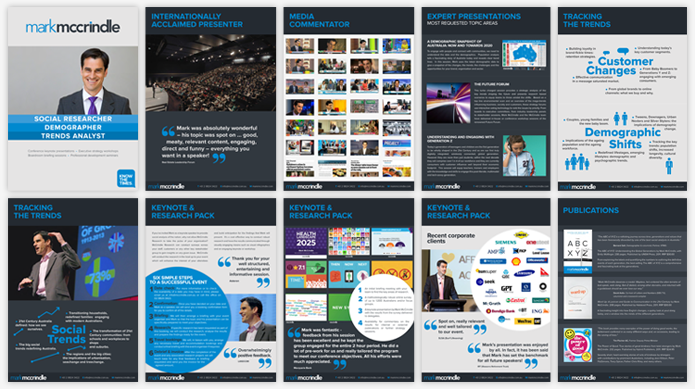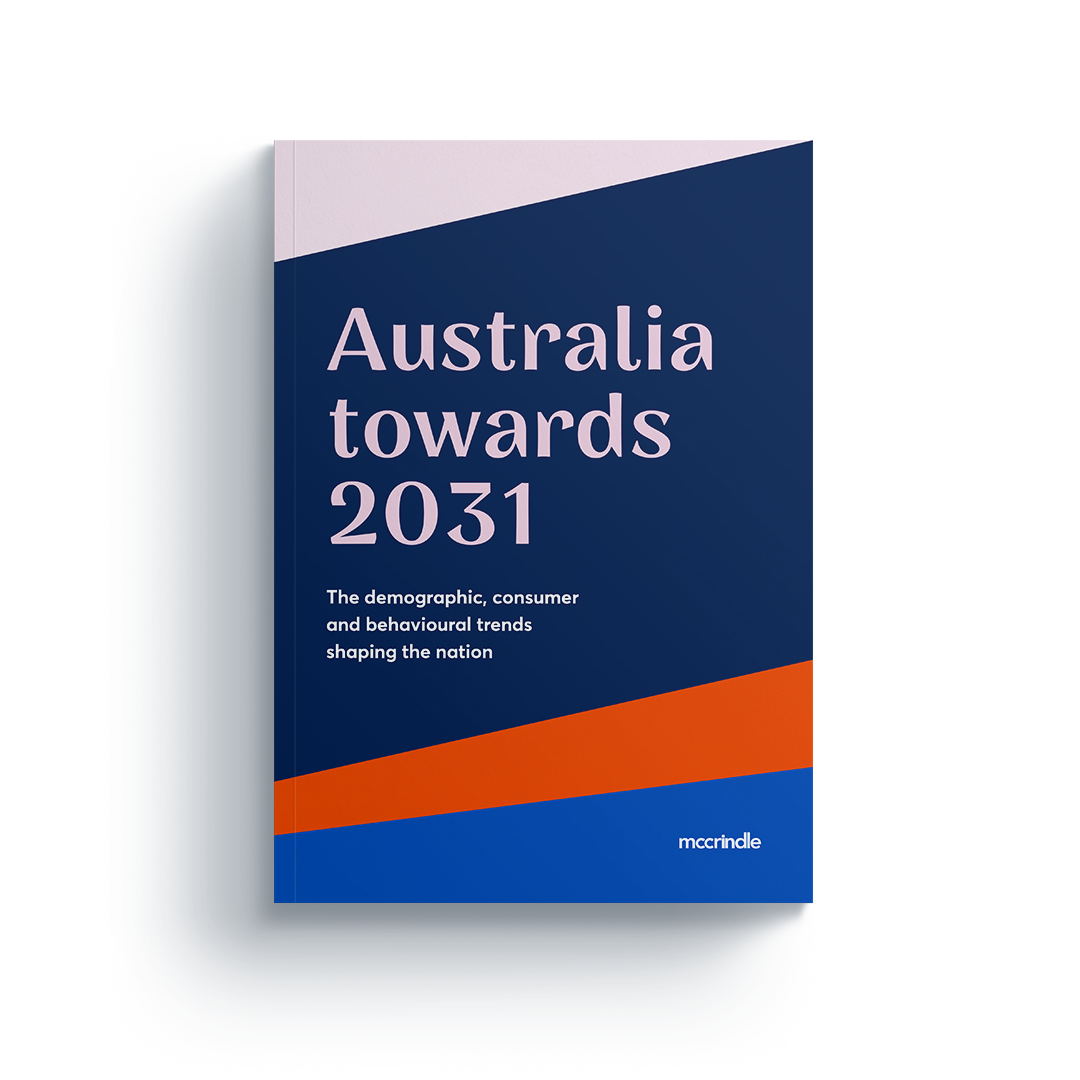Mark McCrindle Talks: Business, consumer behaviour and how to remain relevant

Mark McCrindle is a social researcher with an international following. He is recognised as a leader in tracking emerging issues and researching social trends. As an award winning social researcher and an engaging public speaker, Mark has appeared across many television networks and other media. He is a best-selling author, an influential thought leader, TEDx speaker and Principal of McCrindle Research. His advisory, communications and research company, McCrindle, count among its clients more than 100 of Australia’s largest companies and leading international brands.
What trends are transforming the business landscape at the moment?
The first would have to be
How have you seen these changes impacting consumer behaviour?
Well if we look just over the last 5 years, we’ve seen not only an economic downturn which we remember as the GFC, but which continues on and with that a changing consumer attitude which has become the new norm. Australians are now using new technologies to buy smart, shop around and be more empowered. They’re using technology and the power of social networks to find out ‘what do you think of this brand’, ‘what about that product’, or ‘has anyone got an idea on this?’ We’re even changing where we are buying through the emergence of online buying platforms and use of smart devices on which we can shop or at least investigate what we are going to buy wherever we are. So where we buy, what we buy, how we buy, the brands, discount shopping, the buying on price, the informed consumer – it’s all come about through technology.
How can a business thrive during these times of unprecedented change?
It’s firstly important to observe the changes that we see. Most businesses are primarily focused on their particular industry or sector, which is great and is obviously important – people have to have that domain knowledge and expertise. But we also have to be experts in looking outside the walls of our operation and area to the external environment in which we operate, to observe the trends that are taking place out there, because if something is happening out there then it’s going to impact us in here. If something is happening overseas in the globally connected world then it’s going to hit Australia as well. When we observe the trends, and then understand the trends and thirdly hopefully respond to the trends, that’s when we can thrive.
What are the new keys to communicating with clients, staff or stakeholders in general?
Digital technologies have certainly changed the way we communicate, and I think embracing this is key to effective cut through. If we look at how Generation Z who are now starting work have been shaped, it has been in this great screenage that is transforming our society. As a generation they have only ever known this world of screens, and interestingly their preferred search engine is YouTube not just Google, simply because they don’t want to read an article about something when they can watch a video on it. So that changes the whole communication pattern, and not just for Generation Z but for all generations alike. If we think about a visual, screen based, mobile, video-based generation emerging, then we’ve got to adapt to that, and a lot of people have. So communicating in a way that makes sense visually is key – using the power of symbols, pictures and the power of communicating relationally not just rationally. Using images not just words, information or data. The power of a brand these days is to connect not just with the head but with the heart – a visceral connection beyond just ‘here’s why our product is better’.
How are the emerging generation of leaders going to take into account the needs of others beyond themselves, when they have grown up in such a ‘me’ generation?
For the emerging generations there has certainly been more of a self-focus than previously. The introduction of the selfie stick and even of just the world ‘selfie’ in the Oxford English Dictionary does point to an era of narcissism, as some have called it. But if we think about it, while at first it seems a bit self-obsessed to put photos up on Instagram of the lunch we are about to eat or yet another selfie, actually there is more to it than that. People are taking photos of themselves to share that experience with others, in other words it’s just keeping in touch, it’s trying to connect and communicate. A lot of “selfies” are more “groupies”, there’s a few people in the photo. So it turns out that what’s going on is a lot of social behaviour and a lot of connectivity, highlighting that we aren’t as isolated or self-focused and some of those terms might suggest.
Additionally we have a generation of young people emerging now who are global in their identity and their outlook, who are actually more open and interested in what’s happening in the world. When they get their news feed it’s not just what’s happening in their local area, their state or their nation, but globally what’s happening. So we could actually argue they are more aware in a global sense. They are more aware of the bigger things, they are certainly more connected with others and I think with that connection, they can have an influence. Some have called it slacktivism, where they just click and like this, but it turns out that they are getting involved and are active on different campaigns, having a voice, having a vote, having an influence. This social connectivity, this broader global outlook and this cultural diversity that defines them today is bringing a renewed spirit to democracy and engagement. They are not perhaps as self-focused as we think. Even when it comes to spending money they’re not so much saving up to buy the home or the tangible asset, they’re spending money more on the experience, on travel, on connecting and while saving and planning is important for their future at least it shows an attitude of connecting with others and of experiencing the lives of others rather than it all just be about me and getting my asset base together.
For More Information:
Mark’s understanding of the key social trends as well as his engaging communication style places him in high demand in the press, on radio and on television shows, such as Sunrise, Today, ABC News 24, A Current Affair, and Today Tonight. He is also regularly commissioned to deliver keynote addresses at conferences, as well as workshops for strategic board meetings among other events.
His professional speakers pack below provides more information, or you can get in touch with [email protected] for specific enquiries.






